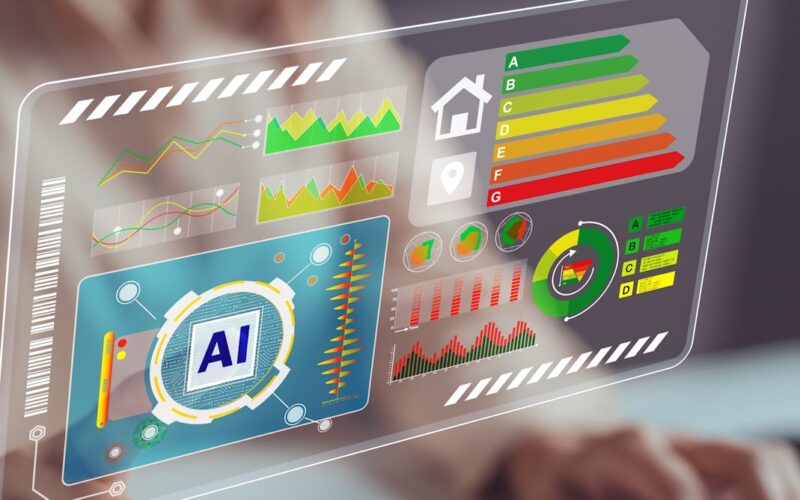As artificial intelligence (AI) technologies become more embedded into our everyday lives and business operations, their high energy demands and environmental impacts call for a more sustainable approach to building algorithms – the sets of instructions used to inform this technology.
Training large AI models can use vast amounts of energy. For example, training an AI platform called GPT-3 required 1,287 MWh of electricity – that’s equivalent to the annual emissions of more than 100 petrol cars.
Sustainable AI practices can reduce environmental demands, improve user experiences and enhance system reliability and performance, thereby reducing the risk of potentially catastrophic failures. Global incidents like the recent Microsoft-Crowdstrike IT outage highlight the need for a more reliable, efficient and resilient digital infrastructure.
Here are four ways that AI algorithms can become both energy efficient and consumer-friendly:
1. Balancing the need for speed
The rapid growth of digital technologies has brought unparalleled efficiency and convenience, making instant responses and seamless online experiences the new standard for tech consumers. However, this surge in digital activity has huge energy demands in terms of data processing and transmission.
AI offers a promising solution. By working out how to cut down on the steps needed to solve a problem, AI can identify and eliminate redundant tasks, reducing the computational resources needed to complete them. This enhances energy efficiency and reduces the carbon footprint of digital systems and data processing tasks.
While more eco-friendly, there’s a risk that overly streamlined processes could reduce the functionality of certain tech, such as voice assistants, recommendation algorithms, or complex data analytic software. So designing AI to be more efficient has both upsides and downsides for consumers.
On the plus side, it means faster response times and smoother interactions, making our digital experiences more enjoyable. Smartphones and laptops will perform better, batteries will last longer and devices will have less risk of overheating. Lower energy use can reduce costs, possibly leading to cheaper services for consumers. More reliable services with fewer disruptions, especially during busy times, are another bonus.
There are some potential downsides. If AI becomes too streamlined, we might lose some features or functions of certain tech. Users might feel like they have less control over how they use services such as personalised streaming platforms, smart home systems, or customisable software applications. There could be a period of adjustment as people get used to the new, faster ways AI operates. This could be frustrating to users initially.
As AI systems become more efficient and more complex, people might find it more difficult to understand how their data is being used – that raises concerns about privacy and security. And relying on efficient AI too much might make us more vulnerable to system failures if processes aren’t frequently checked by humans.
2. Dynamic workload management
AI is changing how systems perform by managing workloads dynamically. This means AI can smartly adjust resources based on real-time demand, making systems run better and improving the user experience.
In today’s world, where digital platforms are crucial, especially with the rise of social commerce, strong network connectivity is vital.
During busy times, AI ramps up its capacity to keep things running smoothly. Peak times of demand often occur during business hours, especially in the middle of the workday when many people are online simultaneously for work-related tasks. Demand is also high during evenings when people stream more videos, play online games and use social media.
Predicting peak times accurately and identifying bottlenecks during high loads is challenging but essential for ongoing improvement.
AI enables dynamic workload management. It also enhances device battery life by using power more efficiently, and helps people stay connected even during power outages. Network performance improves as well, with AI preventing slowdowns and disruptions by managing peak loads effectively. This means faster internet, fewer dropped connections and a smoother online experience.
3. Optimising hardware
AI is driving a new era of energy-efficient hardware designed computers and smartphones, such as energy-efficient processors like Apple’s M1 chip in MacBooks and Google’s custom TPU chips for AI workloads.
OMG Snap / Alamy Stock Photo
Eco-friendly technology can lower energy consumption, reduce operating costs for businesses – and ultimately cut prices for consumers.
Energy-efficient hardware is often synonymous with reliability. Designed to operate optimally within their power constraints, these devices are less prone to overheating and hardware failures, resulting in fewer service interruptions and increased user satisfaction.
4. Integrating sustainability
AI is at the forefront of sustainable innovation. By optimising its own operations, AI can significantly reduce its environmental footprint. For example, AI can monitor energy consumption, identify inefficiencies and be powered by renewable energy sources like solar and wind. This proactive approach to energy management minimises AI’s carbon footprint and sets a precedent for sustainable technological development.
Devices made using energy-efficient components and recyclable materials offer a sustainable alternative without compromising performance. By choosing these eco-friendly technologies, consumers can enjoy their favourite apps and services while actively reducing their carbon footprint.
Source link
lol

